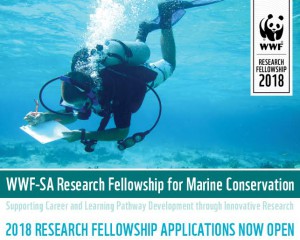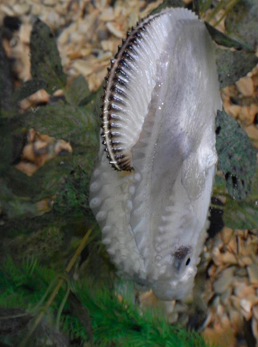Petro Kotzé
A ranger is, by definition, “a keeper of park, forest or area of countryside.” Marine rangers then, are the keepers of the sea. In SANParks, they are employed to take care of and protect the various Marine Protected Areas (MPAs) under the management of the organisation. It’s no mean feat, as the marine rangers of the West Coast National Park can attest.
“We have a young team, but we are good,” says WCNP Marine Section Ranger William Brink. They originally started with four, but have since grown to include nine permanent members. Among them, they keep check on the West Coast National Park MPA, an awe-inspiring mix of different habitats and related challenges.
There is, firstly, the world-renowned Langebaan Lagoon which is divided into three sections. In the Controlled Zone, marked as Zone A, recreational fishing and power boating are allowed. Non-power driven vessels for sailing and canoeing are allowed in the restricted Zone B but no fishing. No activities at all are allowed in Zone C, protected as a sanctuary. The MPA further extends to the coastline along Sixteen Mile Beach where no fishing is allowed from the shore. MPAs are also in place around the four islands under WCNP management, namely Malgas, Jutten, Schaapen and Marcus islands. Along the shores of the islands, no fishing or diving is allowed.
Every day, it is this team’s job to meticulously check that all rules and regulations are adhered to, in order to ensure that the marine area is kept ecologically intact. First, they fine-comb the coastline for any transgressors, checking that fishermen have the correct permits or that people are walking their dogs in the approved areas. “We get a lot of support from the public,” says senior section ranger Ralph Kelly but, they do not always receive a warm welcome. Kelly is unperturbed by this. “If you’re going to be lenient, law enforcement is not for you.”
Kelly and Brink have been with the marine team since its establishment and with the park even before the MPA was declared and called for specialised ranger to look after it. They know the area, and its people. In fact, Kelly’s dad lived at Seeberg, and his family has a long history of fishing in the area. Yet, this does not let him relax his vigilance. “I’ve written fines for family members in the past.”
But there’s never much time for chatting with this team. Next, they dart off to check boating licenses at the dock. This day was quiet, but once the season starts picking up, it gets frantic. “In peak season there can be 300 to 400 boats on the lagoon,” says Brink. Their busiest time of the year starts now, in September, and runs until April.
Then, it’s time for a quick tea break. This is kept to 15 minutes, as the sea is already beckoning. Today we’re going to Malgas Island to pick up rangers who have been on the island for two days. They tackle the ocean full-speed ahead, bumping over waves with the Atlantic nipping at your face. It’s no yacht ride, but it is awesome. Rangers are stationed at the island for tasks such as bird counts and checking for any transgressions such as poaching. “In general, we’re not seeing as many cases of abalone poaching anymore, but we often find illegal bait collecting or people transgressing bag limits,” says Kelly.
From Malgas, it’s a quick ride past Bird Island, before heading to the Langebaan Lagoon. On the way, the rangers check boat permits, fishing licenses and bag limits, cautioning canoeists for not wearing life jackets along the way. Then, we’re whizzing back to the A zone, then to B. “There are 10 commercial fishing permits allocated, and 28 people that can fish per permit,” says Kelly. So the rangers have to check that people stay and fish in the correct zone.
As we bob along the water, Kelly tells of the multitude of other tasks that are included in their job specs. This includes anything from removing massive seal carcasses off the rocks before they start smelling, monitoring seabirds and supporting researchers by assisting with prawn data collection to night patrols for abalone and crayfish poachers. “Nowadays they are even going for small crayfish with eggs.”
The job of a marine ranger requires long hours, hard and physical work, and sometimes brining people to book. It’s not easy but, it is clear that the WCNP marine team loves it. In fact, for them, this job is a “privilege,” says Kelly and, as long as they are keeping an eye on it, this marine area will be kept in place for all future generations to enjoy.






